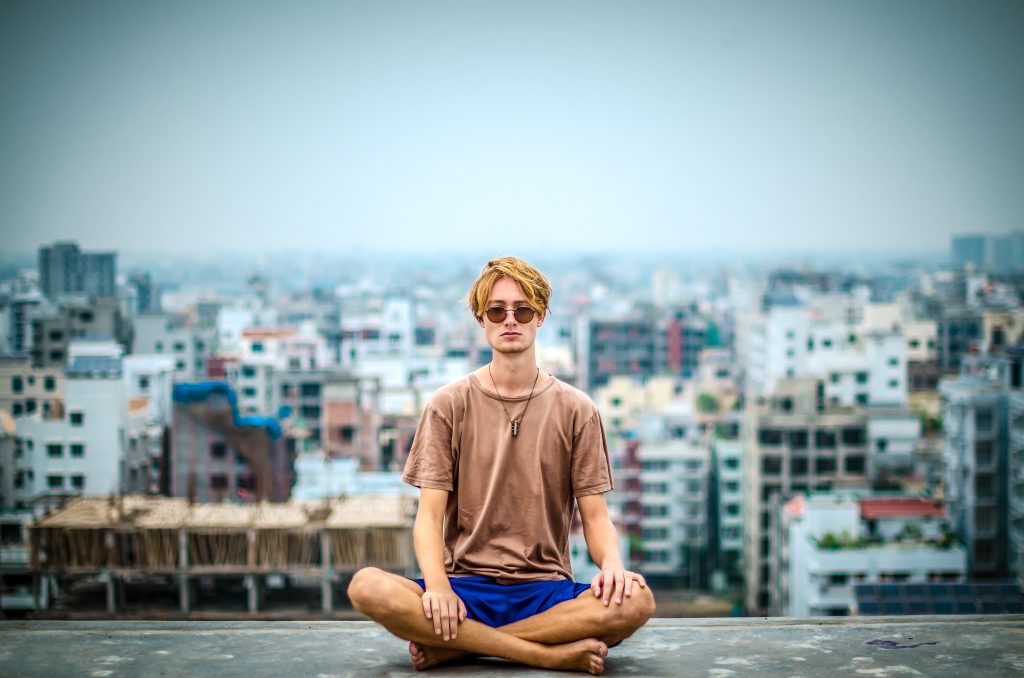
“We cannot solve our problems with the same thinking we used when we created them.”
– Albert Einstein
Meditation has a surprisingly large number of benefits. Among other things it can reduce stress levels, improve your memory, and make you a more creative and compassionate individual.
In the last 10 years, hundreds of studies have been released about the effects of meditation, and they show that it changes in our brain for the better.
One of the greatest benefits of meditation is that it improves our focus. As most of us are constantly bombarded with messages on our smartphones and laptops, the ability to avoid distractions and concentrate on our work is more important than ever.
Many people are afraid to start meditating because they think it would be too complicated for them or that they could ruin it. The truth is, most of these fears are groundless. To prove this I’m going to show you a very simple meditation technique that you can start practicing right away, without further preparations.*
There are many different forms of meditation. What I’m about to introduce is most often referred to as mindfulness meditation, or focused attention.
I’ve chosen this technique as it is relatively easy to get into, and it is proven to boost concentration. Although, while practicing this method you’re going to have to direct your attention toward one thought, it will also allow you to observe your wandering thoughts as they drift through your mind.
Going through the steps I describe will allow you to experience the impacts of this method to some degree. But meditation is the most effective when done regularly, so if you feel this practice useful and you would like to take advantage of the mindfulness techniques completely, you should try to build a habit and meditate once or twice every day at the same time.
This post is just a brief introduction to meditation, and I encourage you to read further about this topic, discover other techniques, and find the ones that are the most appropriate for you. To make this easier, I’ve collected several links to informative and helpful articles about meditation that you can find at the end of this post.
Training your mind to sustain attention, and gently directing your thoughts in the long run will help you to tap into your most creative and innovative self. Meditation allows you to stop time, decompress all the things around you and escape into an “inner oasis.” Reaching it opens a new way of thinking: a different state of mind, where your perspectives change. I believe this is the state of mind that Einstein referred to.
Mindfulness meditation in seven steps
- First of all, find a quiet place to meditate. It doesn’t need to be a hermetically sealed room, unless the noise is really loud, background noises won’t disturb your meditation. Close the windows, dim the lights, and turn off or mute your gadgets. Scented candles or flowers might enhance the experience, but they are not really necessary, so don’t worry about them.
- Set a timer. At first, I don’t recommend you to meditate longer than 10 to 15 minutes, but later when you’re used to it, you can gradually increase this time to 20 or 30 minutes, or even longer.
- Sit down on a chair. At a later time you might consider acquiring a meditation cushion (called “zafu”), but at first a simple chair will work just fine. Not an armchair, though, try to find a chair with a flat seat that allows you to sit comfortably with both of your feet on the ground.
- Straighten your back and rest your hands on your thighs. Don’t rest your back against the chair, try to maintain an upright but not rigid position. Imagine that your spine is a tree and lean against it.
- Close your eyes (or not). The goal of mindfulness meditation is to help you concentrate and turn your attention inward. If you can do it better while your eyes are closed, do so. If it’s uncomfortable for you for some reason, keep them half open and try to slightly focus your gaze on whatever is in front of you. Don’t try to stare at the various things in your room, just let your gaze rest wherever it lands.
- Concentrate on breathing. Breathe naturally and pay attention to the process of inhaling and exhaling. You can focus on how your lungs expand, or how air leaves your nose.
When your mind wanders during the meditation, gently bring your attention back to breathing. In the beginning of the meditation breathing in through the nose out through the mouth could help you to focus, but you shouldn’t breathe this way throughout the whole practice. Counting your breaths is also a great way to refocus your attention.
- And that’s it. Once your timer signals, stretch your muscles, rest a little bit, and let your mind wander.
If you repeat this every morning, it will make you calmer and help you focus on your work throughout the day.
Our mind is like a feather in the wind — once we let it flow, it will fly into various directions, and there is a very tiny chance that it would not quickly get back to our hands. If we don’t pay attention to our wandering, the mind can travel very far and stumble upon places that are better left unexplored. Thus, we could become anxious or negligent. A simple 10-minute meditation is not a too big price to pay to keep things under control and have a more comfortable day.
Additional resources:
Meditation apps, guided meditations:
Free guided meditations from the UCLA Mindful Awareness Research Center
Meditation guides:
How to practice mindfulness meditation
Everything you need to start meditating
How to meditate – for beginners
The effects of meditation:
The science behind meditation and why it makes you feel better
20 scientific reasons to start meditating today
7 ways meditation can actually change the brain
Forever Young(er): potential age-defying effects of long-term meditation on gray matter atrophy
*On very rare occasions mindfulness meditation may lead to bad experiences. If you’ve been diagnosed with a mental illness, or you are struggling with very serious problems right now, don’t go through these steps alone. In these cases, it’s better to start meditation with the help of a teacher.






0 comments
Write a comment